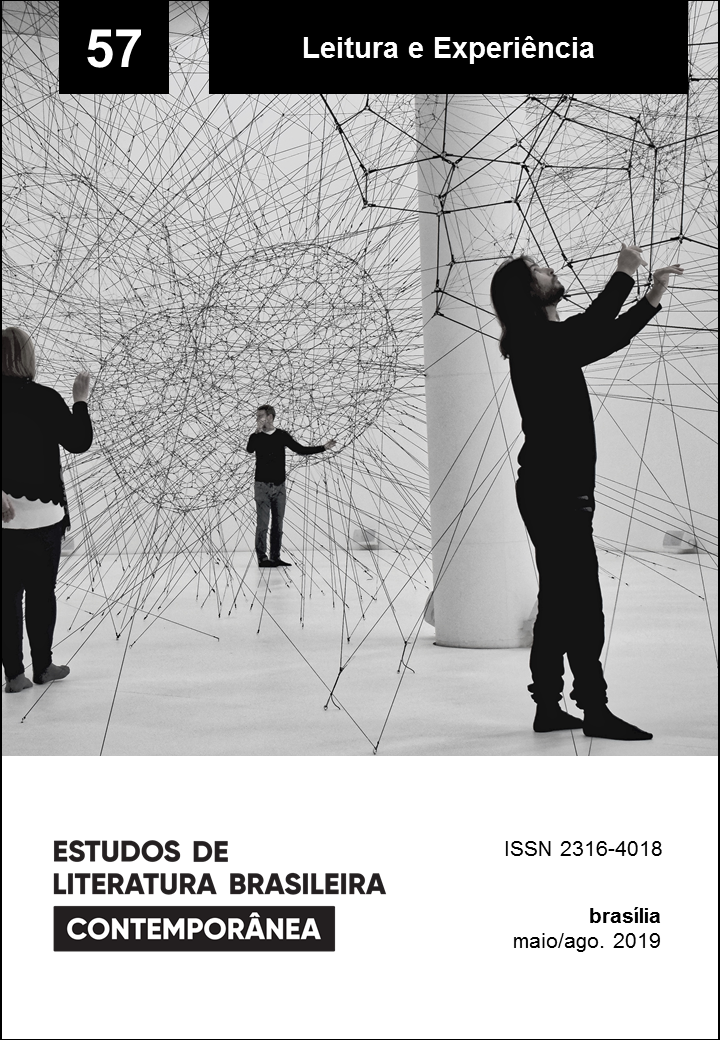Who reads spiritualist books?
DOI:
https://doi.org/10.1590/2316-4018578Keywords:
spiritist literature, spiritist editorial market, reading practicesAbstract
The growing Spiritualist editorial market suggests a need to establish the particular kind of reader who seeks knowledge and consolation in Spiritualist literature. Based on our experience as readers, we seek to identify the profile of the Brazilian reader of Spiritualist books, obtained through the collection of data across the country. Our research is based on the study “Retratos da Leitura no Brasil” and seeks to collect, among readers who are mostly Spiritistualist, information that identifies them as Brazilian citizens and that translates their reading experiences, such as authors they admire, readings in progress, reading habits and reading practices.
References
ADRIA, Kesi (2016). Mercado de livros espíritas cresce 85% em uma década. O Liberal, Campinas, 19 ago.
Disponível em: https://bit.ly/2YBuJ9w. Acesso em: 20 jun. 2018.
AMORIM, Galeano (2008). Retratos da leitura no Brasil. São Paulo: Imprensa Oficial.
CAVALCANTI, Maira Laura Viveiros de Castro (1983). O mundo invisível: cosmologia, sistema ritual e noção
de pessoa no Espiritismo. Rio de Janeiro: Zahar. Disponível em: https://bit.ly/2WNWlYp. Acesso em: 15 abr.
CAMPOS, Humberto de [Espírito]. Brasil, coração do mundo, pátria do evangelho. Psicografia de Francisco
Cândido Xavier. 34. ed. Brasília: FEB, 2015.
DARWIN, Charles (2017). Origem das espécies. Tradução de Joaquim da Mesquita Paul. [s.l.] Textos para
Reflexão. E-book Kindle.
DIAS, Haroldo Dutra (2018). Sexualidade e gênero ”“ Espiritismo. Palestra. (7m24s). Disponível em:
https://www.youtube.com/watch?v=gxMP2HhAIzg. Acesso em: 1º maio 2019.
ESPIRITISMO ”“ números materializados (2012). Superinteressante, 28 maio 2012. Disponível em:
https://bit.ly/2w4qvea. Acesso em: 9 abr. 2018.
FEB ”“ FEDERAÇÃO ESPÃRITA BRASILEIRA (s.d.). Perguntas frequentes. On-line. Disponível em:
http://www.febeditora.com.br/perguntas/
FRANZOLIM, Ivan (2012). Quantos somos? Dados do censo revelam o crescimento do número de espíritas e a
diferença entre outros grupos religiosos. São Paulo: Vinha de Luz, 13 ago. On-line. Disponível em:
https://bit.ly/2JL4fOv. Acesso em: 20 jun. 2018.
GARCIA, Wilson (2015). Nossas editoras entraram num caminho comum. E agora? In: GARCIA, Wilson.
Expediente-on-line: blog do Garcia. Disponível em: https://bit.ly/2HAoawH. Acesso em: 1º mai. 2019.
KARDEC, Allan (1984). O livro dos médiuns. Tradução de J. Herculano Pires. São Paulo: FEESP.
KARDEC, Allan (2000). O livro dos espíritos. Tradução de Sandra R. Keppler. São Paulo: Mundo Maior.
KARDEC, Allan (2004). Frenologia espiritualista e espírita: perfectibilidade da raça negra. Tradução de
Evandro Noleto Bezerra. Revista Espírita: jornal de estudos psicológicos. Brasília: Federação Espírita
Brasileira. p. 141-152.
LEWGOY, Bernardo (2000). Os espíritas e as letras: um estudo antropológico sobre cultura escrita e
oralidade do espiritismo kardecista. Tese (Doutorado em Antropologia Social) ”“ Faculdade de Filosofia,
Letras e Ciências Humanas, Universidade de São Paulo, São Paulo.
MANSUR, Alexandre; CORDEIRO, Tiago (2003). Sucesso do outro mundo. Época, Rio de Janeiro. On-line.
Disponível em: https://glo.bo/2QaU86W. Acesso em: 15 maio 2018.
MUNANGA, Kabengele (2003). Uma abordagem conceitual das noções de raça, racismo, identidade e
etnia. In: SEMINÁRIO NACIONAL RELAÇÕES RACIAIS E EDUCAÇÃO, 3., 5 nov., PENESB-RJ, Niterói.
Palestra. On-line. Disponível em: https://bit.ly/2tdEOMY. Acesso em: 28 jun. 2018.
NAKAGOME, Patrícia Trindade (2017). Os caminhos da leitura: a reta e o círculo. In: PEREIRA, Danglei
de Castro. Nas linhas de Ariadne: literatura e ensino em debate. Campinas: Pontes. p. 131-141.
PODE SER GAY? (2017). Direção e Produção: Fábio Olivieri. Roteiro: Fábio De Lucca. Intérpretes:
Alex Moczydlower; Fábio de Luca. Rio de Janeiro: Amigos da Luz. Son., Color. 6min35s. Disponível
em: https://bit.ly/2o9IPNn. Acesso em: 20 jun. 2018.
SILVA, Ana Claudia da; CARBONARI, Rosemeire (1997). Cópia e leitura oral: estratégias para ensinar? In:
CHIAPPINI, Lígia; BRANDÃO, Helena; MICHELETTI, Guaraciaba (Org.). Aprender e ensinar com textos
didáticos e paradidáticos. São Paulo: Cortez. p. 95-115.
SOUSA, Hege Laghi de (2013). Darwin e Kardec: um diálogo possível. Campinas: Allan Kardec.
STOLL, Sandra Jackeline (2004). Narrativas biográficas: a construção da identidade espírita no Brasil e sua
fragmentação. Estudos avançados, São Paulo, v. 18, n. 52, p. 181-199. Disponível em: https://bit.ly/2EcJYxO.
Acesso em: 15 maio 2018.
Downloads
Published
Issue
Section
License
Authors who publish in this journal agree to the following terms:
a) The authors maintain the copyright and grant the journal the right of first publication, the work being simultaneously licensed under the Creative Commons Attribution License-Non Commercial 4.0 which allows the sharing of the work with acknowledgment of the authorship of the work and publication this journal.
b) Authors are authorized to enter into additional contracts separately, for non-exclusive distribution of the version of the work published in this journal (eg publish in institutional repository or as a book chapter), with authorship recognition and publication in this journal.
c) Authors are allowed and encouraged to publish and distribute their work online (eg in institutional repositories or on their personal page) after the editorial process, as this can generate productive changes, as well as increase the impact and citation of published work (See The Effect of Free Access).
d) The authors of the approved works authorize the magazine to, after publication, transfer its content for reproduction in content crawlers, virtual libraries and the like.
e) The authors assume that the texts submitted to the publication are of their original creation, being fully responsible for their content in the event of possible opposition by third parties.


